Everyone Can Be An Expert Gardener.
Just Follow These Tips.

Carol Burgess
Carol Burgess comes from a family of gardeners. As a child she followed her grandmother around her yard with her own child sized gardening tools, ready to lend a hand. Her grandfather planted Dogwood Trees all over the south Atlanta area while one of her cousins, Mildred Owens, had the Shady Lady Day Lilly named after her. Carol spent time with her aunt and mother and later on with her daughters swapping stories and sharing laughs while working in the garden.
Here are Carol’s Top 10 Gardening Tips:
Aim for beauty, not perfection. Most people don’t have the time, money or energy to have the perfect yard.
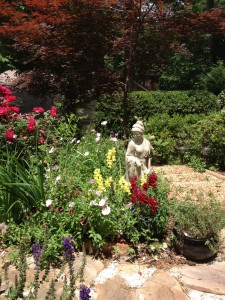
Garden Sculpture
Don’t be discouraged when plants die. Even experienced gardeners lose plants. As soon as possible, remove dead plants, limbs, and trees from your property. That way, you can celebrate your success when you garden. Gardening should be fun.
Plant something special around your mailbox. Your mailbox is the first impression of your house. Here are some favorite mailbox plants that do well in the sun. Clematis (vine), yellow or white Jasmine (a fragrant vine), Firepower Nandina (a shrub that provides color in the fall and winter), Asiatic Lilies (a tall perennial with large flowers that should be planted in clusters and cut down in August) and Bearded or Siberian Irises.

Carol's Garden
Get formal. If you have a cottage garden, add formal elements such as statuary, symmetrical shrubs and fountains.
Plant like with like. Plant similar plants together in odd numbered groups.
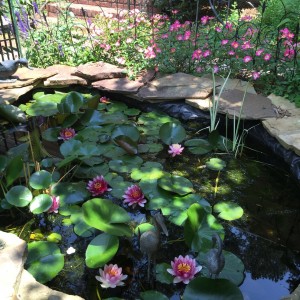
Lily Pond
Plant for sun and shade. Plant vivid colors in the sun and paler colors in the shade to part shade.
Vary color, height, and texture. Varying the color, height, and texture of plants adds interest to your garden.
Don’t forget your house. Consider the color of the front of your house when selecting plants for your front garden.
Gardens evolve. You don’t have to get everything right the first time, gardens evolve over time whether or not you have a plan.
Experiment! Don’t be afraid to experiment. Gardening is more of an art than science. Be grateful every day that you are here to enjoy the beauty of nature.
Carol’s Favorite Trees and Plants:
Favorite Perennials (Plants that return year after year):
Favorite Fall Interest:
Favorite Summer Interest:
Favorite Winter Interest:
Favorite Spring Interest:
|
 Azaleas  Asiatic Lillies 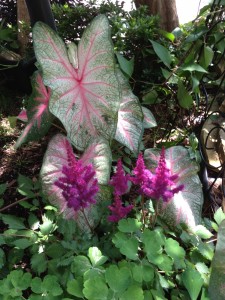 Caladiums and Atilbe 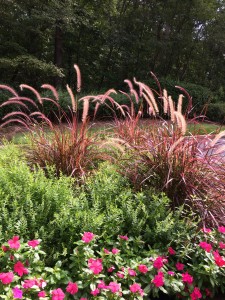 Fountain Grass 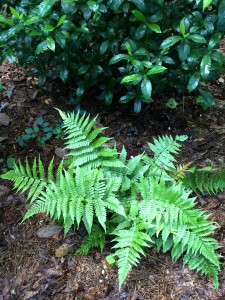 Autumn Fern 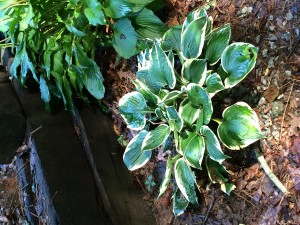 Hostas |
|---|


